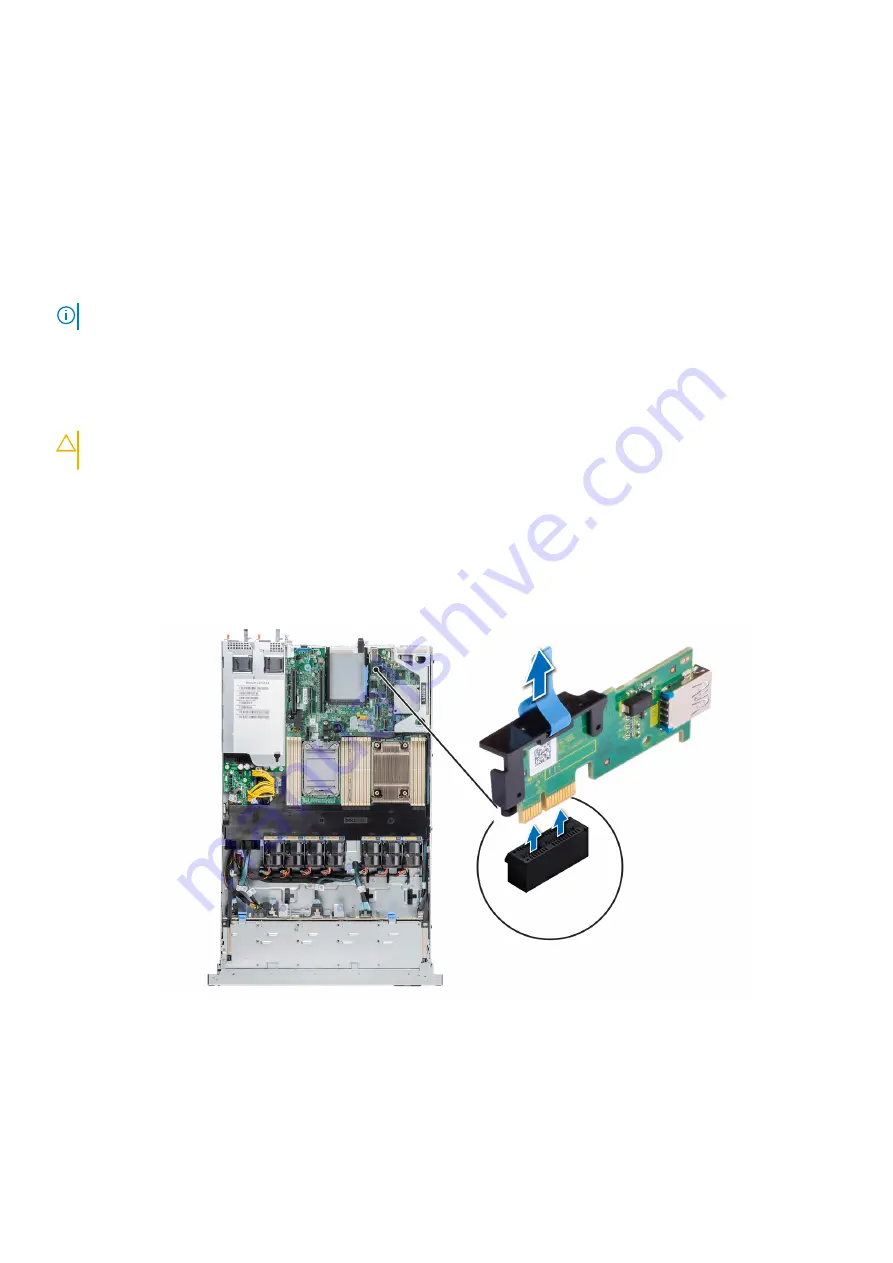
3. Confirm that the battery is operating properly, by performing the following steps:
a. Enter the System Setup, while booting, by pressing F2.
b. Enter the correct time and date in the System Setup
Time
and
Date
fields.
c.
Exit
the System Setup.
d. To test the newly installed battery, remove the system from the enclosure for at least an hour.
e. Reinstall the system into the enclosure after an hour.
f. Enter the System Setup and if the time and date are still incorrect, see
section.
Optional internal USB card
NOTE:
To locate the internal USB port on the system board, see the
System board jumpers and connectors
section.
Removing the optional internal USB card
Prerequisites
CAUTION:
To avoid interference with other components in the server, the maximum permissible dimensions of
the USB memory key are 15.9 mm width x 57.15 mm length x 7.9 mm height.
1. Follow the safety guidelines listed in the
.
2. Follow the procedure listed in the
Before working inside your system
3.
Steps
1. Holding the blue tag, lift the internal USB card to disconnect from the connector on the system board.
2. Remove the USB memory key from the internal USB card.
Figure 115. Removing the internal USB card
Next steps
.
112
Installing and removing system components
















































